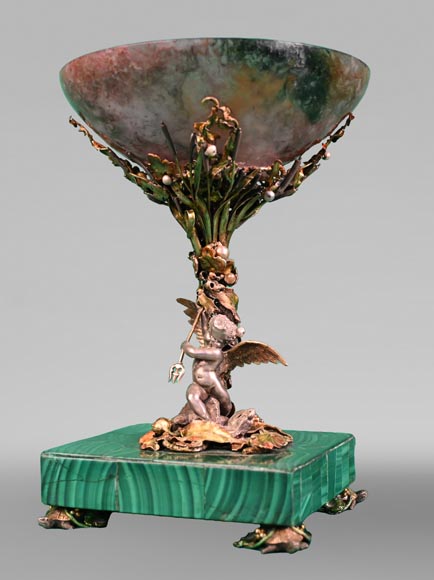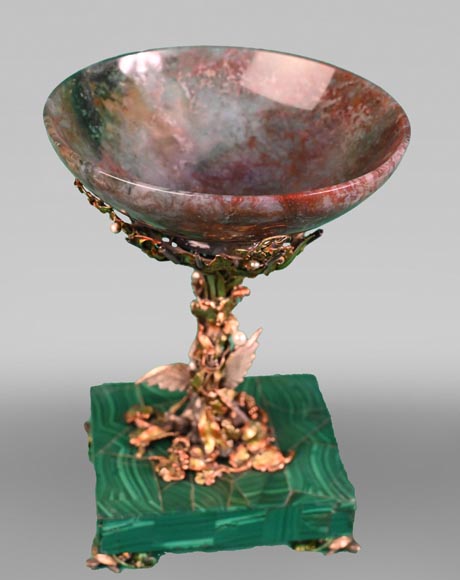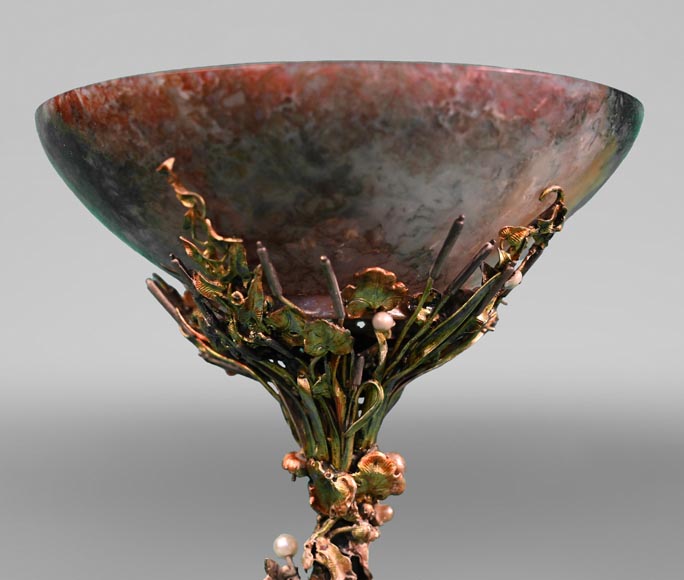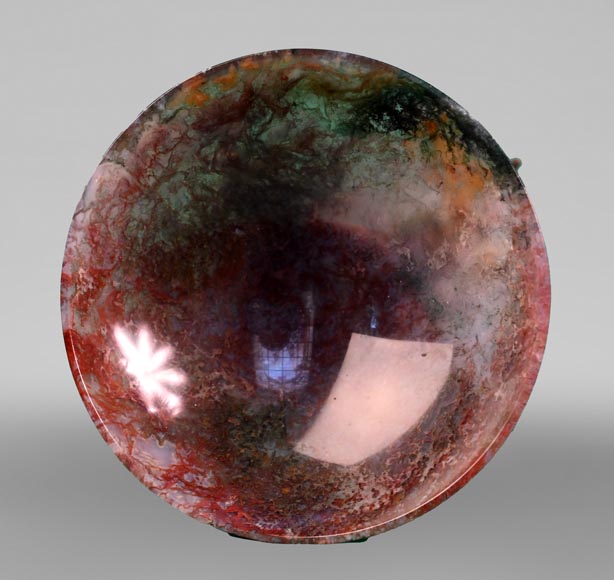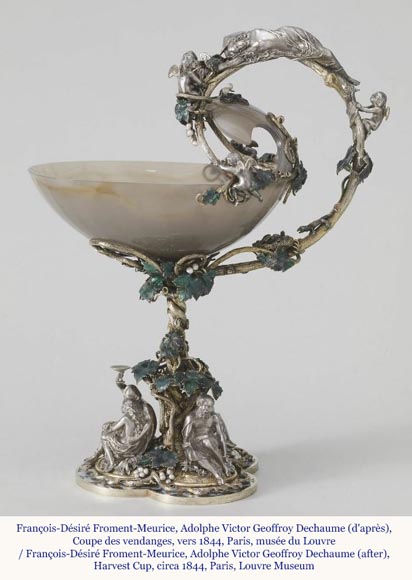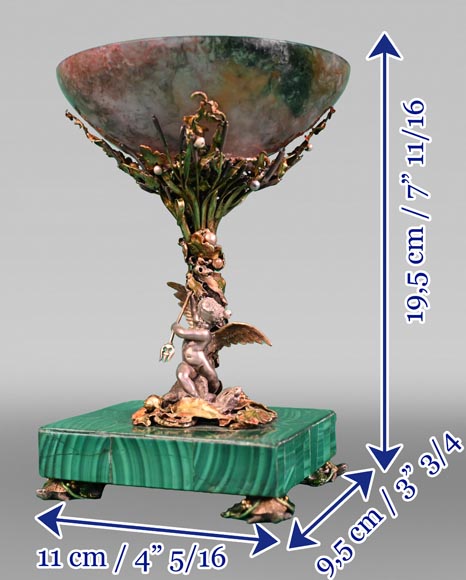Style Neo-Renaissance / Ref.14918
François-Désiré FROMENT-MEURICE, Silver, Agate and Malachite Tazza Decorated with a Rich Maritime Design, 1853
Dimensions
Width 4'' ⅜ 11cm
Height 7'' ⅞ 20cm
Depth: 4'' 10cm
Origin:
France, 1853
This splendid cup with a marine decor was created by François-Désiré Froment-Meurice in 1853.
The son of a modest goldsmith who died shortly after his birth, François-Désiré Froment-Meurice took over the goldsmith manufacturing business of his stepfather, Pierre-Jacques Meurice, in 1828; a few years later, he also inherited that of a jeweler and goldsmith merchant.
At the 1839 Exhibition of Industrial Products, Froment-Meurice already bore the title of “goldsmith jeweler of the city of Paris”. His highly acclaimed exhibition earned him a double silver medal in goldsmithing and jewelry. At the 1844 Exhibition of Industrial Products, he was awarded a gold medal. His inspiration was eclectic, and the techniques and materials used were varied (hard stones, enamel, niello, repoussé…). Among other things, he exhibited commissions from the city of Paris, a chalice intended for the pope, and the Harvest Cup acquired by the Duke of Montpensier. At the 1849 exhibition, he received a gold medal recall; notably, the table centerpiece commissioned by the Duke of Luynes and the first elements of the dressing table intended for the Duchess of Parma, designed by Duban, were particularly admired. The entire dressing table (table, mirror, candelabra, caskets) was presented in London at the Great Exhibition of 1851, where its virtuosity ensured Froment-Meurice’s triumph. The goldsmith died, at the height of his glory, shortly before the 1855 World’s Fair.
At his death, his son succeeded him and later became one of the most brilliant goldsmiths of the Second Empire.
This cup, combining malachite veneer, partially gilded and enameled chiseled silver, and moss agate, was created precisely at the end of his career. It fits perfectly into his production of extremely refined small objects.
Four turtle-shaped feet support a malachite veneered base using the so-called “Russian mosaic” technique. From this base rises the silver stem, whose abundant and delicate decor forms the very structure. At the base, on a bed of aquatic plants, a cupid brandishing a trident set with a pearl subdues a sea monster. Above, aquatic plants also hosting pearls flourish, culminating in a motif of reeds supporting the moss agate cup. The delicacy of the silver chiseling is matched only by the subtlety of its color variations.
The whole piece echoes the artist’s taste for 16th-century goldsmithing. Eclecticism and historicism indeed hold a privileged place in his work.
Froment-Meurice created another equally precious cup, also inspired by Renaissance goldsmithing. This is the so-called “Harvest Cup”, now kept at the Louvre Museum in Paris.
Informations
Price: on request
Recommended for you :
Dimensions:
Width: 20
Height: 34
Depth: 15
Dimensions:
Width: 14
Height: 28
Depth: 10
Dimensions:
Height: 33
Depth: 16
Dimensions:
Height: 25
Diameter: 12
Dimensions:
Width: 11
Height: 15
Depth: 11
Dimensions:
Width: 9
Height: 25
Depth: 9
Dimensions:
Width: 15
Height: 38
Depth: 15
Dimensions:
Height: 26
Depth: 14
Dimensions:
Height: 7
Diameter: 10
Dimensions:
Width: 17
Height: 25
Depth: 11
Dimensions:
Width: 20
Height: 44
Depth: 9
Dimensions:
Height: 14
Depth: 17



